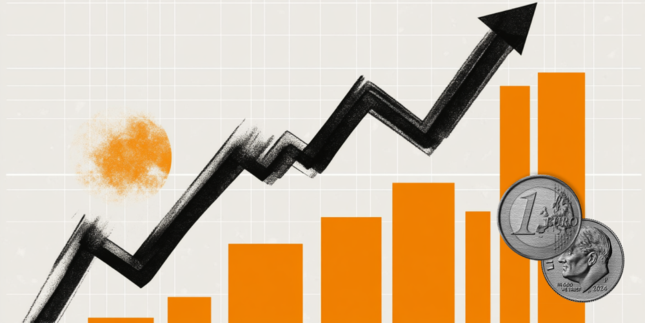- Gold rises in risk-on setting, shrugging off robust US data as the US Dollar hits a 12-month low.
- Powell’s dovish remarks keep US Treasury yields stable, pressuring the US Dollar and boosting Gold.
- Focus shifts to upcoming core PCE and job data, crucial for Fed decisions; rate cut prospects bolster Gold.
Gold prices advanced firmly during the North American session on Tuesday amid a risk-on environment and steady US Treasury yields. Investors ignored better-than-expected economic data from the United States (US), failing to underpin the already battered Greenback. The XAU/USD trades at $2,524 and gains over 0.20%.
The financial markets' narrative has remained unchanged since Federal Reserve (Fed) Chair Jerome Powell announced last Friday that the time for lowering interest rates has come. This sent US Treasury bond yields tumbling and the US Dollar to a new 12-month low, levels last seen in July 2023, according to the US Dollar Index (DXY).
The DXY sits at 100.55 and slumps 0.31%, while the US 10-year benchmark note yields 3.829%, virtually unchanged.
American Consumers turned slightly optimistic in August, according to a poll by the US Conference Board (CB). However, traders remain laser-focused on Friday’s release of the core Personal Consumption Expenditures Price Index (PCE), the Fed’s preferred gauge for inflation, along with jobs market data with the Initial Jobless Claims report announced on August 29.
This could be a prelude to the upcoming Nonfarm Payrolls report due to the Fed’s pivot toward worrying about the labor market. The jobs market remains healthy if the number of Americans filing for unemployment claims is lower than estimates. Otherwise, the US Dollar could weaken further, creating a tailwind for Gold prices.
The December 2024 Chicago Board of Trade (CBOT) fed funds future rates contract hints that investors are eyeing 100 basis points of Fed easing this year, up from Monday’s 97. This implies that traders estimate a 50 bps interest rate cut at September’s meeting, though odds for lowering rates of that size lie at 34.5%, according to the CME FedWatch Tool.
Bullion prices received a lifeline from rising tensions in the Middle East. The Israel-Hezbollah conflict escalated over the weekend, and fears that the conflict could broaden would be positive for the golden metal.
Daily digest market movers: Gold price climbs, ignoring Consumer Confidence data
- If US economic data continues to be weak, the Gold price uptrend is likely to persist, fueling speculation about a larger rate cut by the Fed.
- US Conference Board revealed that Consumer Confidence for August came at 103.3, up from July’s upwardly revised 101.9 and exceeded estimates of 100.7.
- Gross Domestic Product (GDP) figures for Q2 in the second estimate are expected to improve from 1.4% to 2.8%.
- On Friday, the Fed’s favorite inflation gauge, the core Personal Consumption Expenditures (PCE) Price Index, will be revealed. It is expected to rise from 2.6% to 2.7% YoY.
Technical outlook: Gold’s uptrend is intact as buyers eye $2,550
Gold price’s upward bias remains, though price action during the last couple of days shows that traders are reluctant to position themselves ahead of the PCE data release.
From a momentum standpoint, the Relative Strength Index (RSI) is failing to crack its last peak, contrarily to XAU/USD price action, meaning that a negative divergence could be looming.
If XAU/USD slides below the current week’s low of $2,503 and $2,500, this would pave the way for a deeper pullback. The following support would be the July 17 high at $2,483, followed by the $2,450 psychological mark. Further downside is seen at the 50-day Simple Moving Average (SMA) at $2,410, ahead of $2,400.
On the flip side, if bullion prices clear the all-time high (ATH) of $2,531, this could sponsor a leg-up to $2,550 before challenging $2,600.
Gold FAQs
Gold has played a key role in human’s history as it has been widely used as a store of value and medium of exchange. Currently, apart from its shine and usage for jewelry, the precious metal is widely seen as a safe-haven asset, meaning that it is considered a good investment during turbulent times. Gold is also widely seen as a hedge against inflation and against depreciating currencies as it doesn’t rely on any specific issuer or government.
Central banks are the biggest Gold holders. In their aim to support their currencies in turbulent times, central banks tend to diversify their reserves and buy Gold to improve the perceived strength of the economy and the currency. High Gold reserves can be a source of trust for a country’s solvency. Central banks added 1,136 tonnes of Gold worth around $70 billion to their reserves in 2022, according to data from the World Gold Council. This is the highest yearly purchase since records began. Central banks from emerging economies such as China, India and Turkey are quickly increasing their Gold reserves.
Gold has an inverse correlation with the US Dollar and US Treasuries, which are both major reserve and safe-haven assets. When the Dollar depreciates, Gold tends to rise, enabling investors and central banks to diversify their assets in turbulent times. Gold is also inversely correlated with risk assets. A rally in the stock market tends to weaken Gold price, while sell-offs in riskier markets tend to favor the precious metal.
The price can move due to a wide range of factors. Geopolitical instability or fears of a deep recession can quickly make Gold price escalate due to its safe-haven status. As a yield-less asset, Gold tends to rise with lower interest rates, while higher cost of money usually weighs down on the yellow metal. Still, most moves depend on how the US Dollar (USD) behaves as the asset is priced in dollars (XAU/USD). A strong Dollar tends to keep the price of Gold controlled, whereas a weaker Dollar is likely to push Gold prices up.
Information on these pages contains forward-looking statements that involve risks and uncertainties. Markets and instruments profiled on this page are for informational purposes only and should not in any way come across as a recommendation to buy or sell in these assets. You should do your own thorough research before making any investment decisions. FXStreet does not in any way guarantee that this information is free from mistakes, errors, or material misstatements. It also does not guarantee that this information is of a timely nature. Investing in Open Markets involves a great deal of risk, including the loss of all or a portion of your investment, as well as emotional distress. All risks, losses and costs associated with investing, including total loss of principal, are your responsibility. The views and opinions expressed in this article are those of the authors and do not necessarily reflect the official policy or position of FXStreet nor its advertisers. The author will not be held responsible for information that is found at the end of links posted on this page.
If not otherwise explicitly mentioned in the body of the article, at the time of writing, the author has no position in any stock mentioned in this article and no business relationship with any company mentioned. The author has not received compensation for writing this article, other than from FXStreet.
FXStreet and the author do not provide personalized recommendations. The author makes no representations as to the accuracy, completeness, or suitability of this information. FXStreet and the author will not be liable for any errors, omissions or any losses, injuries or damages arising from this information and its display or use. Errors and omissions excepted.
The author and FXStreet are not registered investment advisors and nothing in this article is intended to be investment advice.
Recommended content
Editors’ Picks

EUR/USD stabilizes above 1.1350 on Easter Friday
EUR/USD enters a consolidation phase above 1.1350 on Friday as the trading action remains subdued, with major markets remaining closed in observance of the Easter Holiday. On Thursday, the European Central Bank (ECB) announced it cut key rates by 25 bps, as expected.

GBP/USD fluctuates below 1.3300, looks to post weekly gains
After setting a new multi-month high near 1.3300 earlier in the week, GBP/USD trades in a narrow band at around 1.32700 on Friday and remains on track to end the week in positive territory. Markets turn quiet on Friday as trading conditions thin out on Easter Holiday.

Gold ends week with impressive gains above $3,300
Gold retreated slightly from the all-time high it touched at $3,357 early Thursday but still gained more than 2% for the week after settling at $3,327. The uncertainty surrounding US-China trade relations caused markets to adopt a cautious stance, boosting safe-haven demand for Gold.

How SEC-Ripple case and ETF prospects could shape XRP’s future
Ripple consolidated above the pivotal $2.00 level while trading at $2.05 at the time of writing on Friday, reflecting neutral sentiment across the crypto market.

Future-proofing portfolios: A playbook for tariff and recession risks
It does seem like we will be talking tariffs for a while. And if tariffs stay — in some shape or form — even after negotiations, we’ll likely be talking about recession too. Higher input costs, persistent inflation, and tighter monetary policy are already weighing on global growth.

The Best brokers to trade EUR/USD
SPONSORED Discover the top brokers for trading EUR/USD in 2025. Our list features brokers with competitive spreads, fast execution, and powerful platforms. Whether you're a beginner or an expert, find the right partner to navigate the dynamic Forex market.




